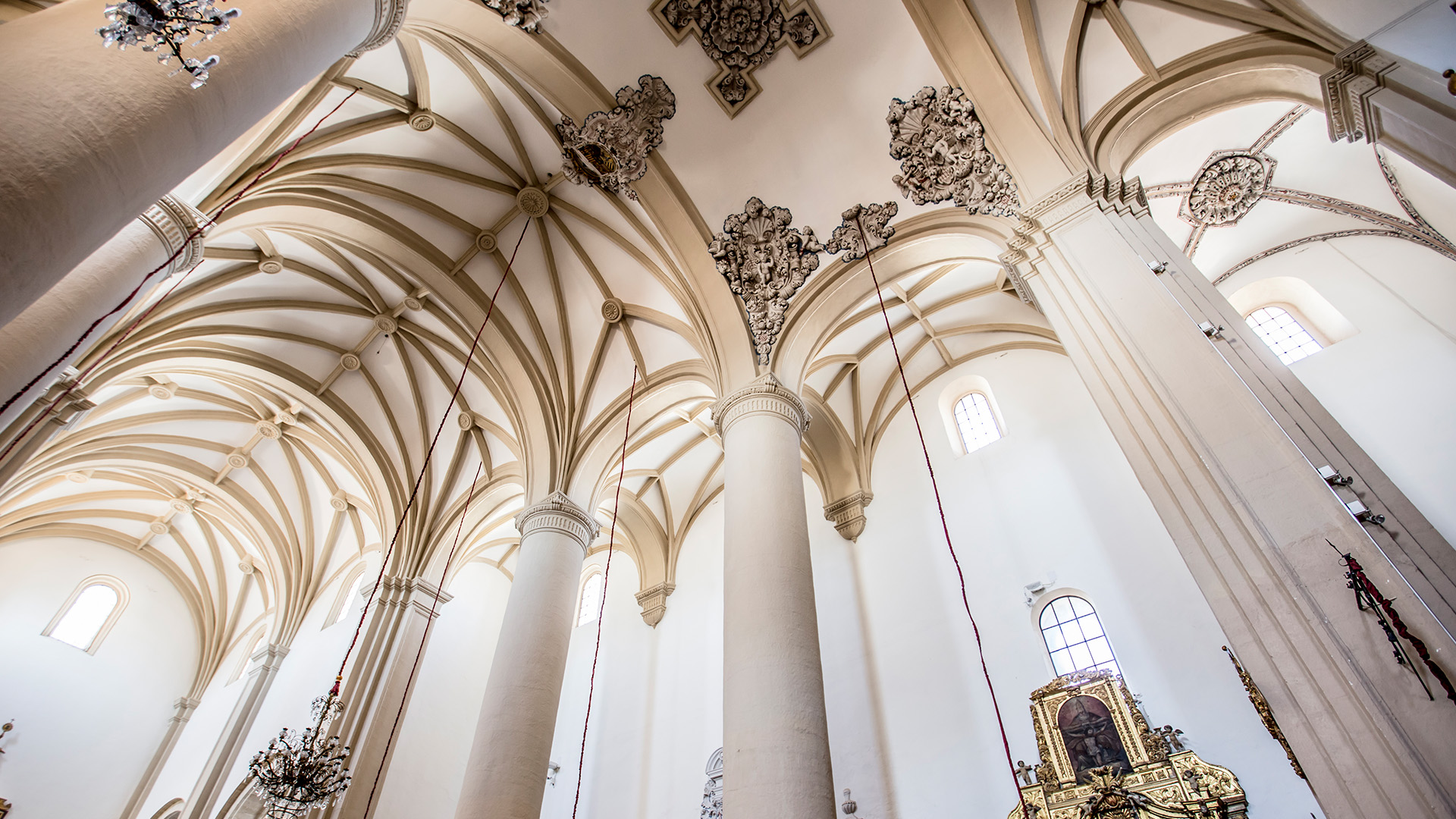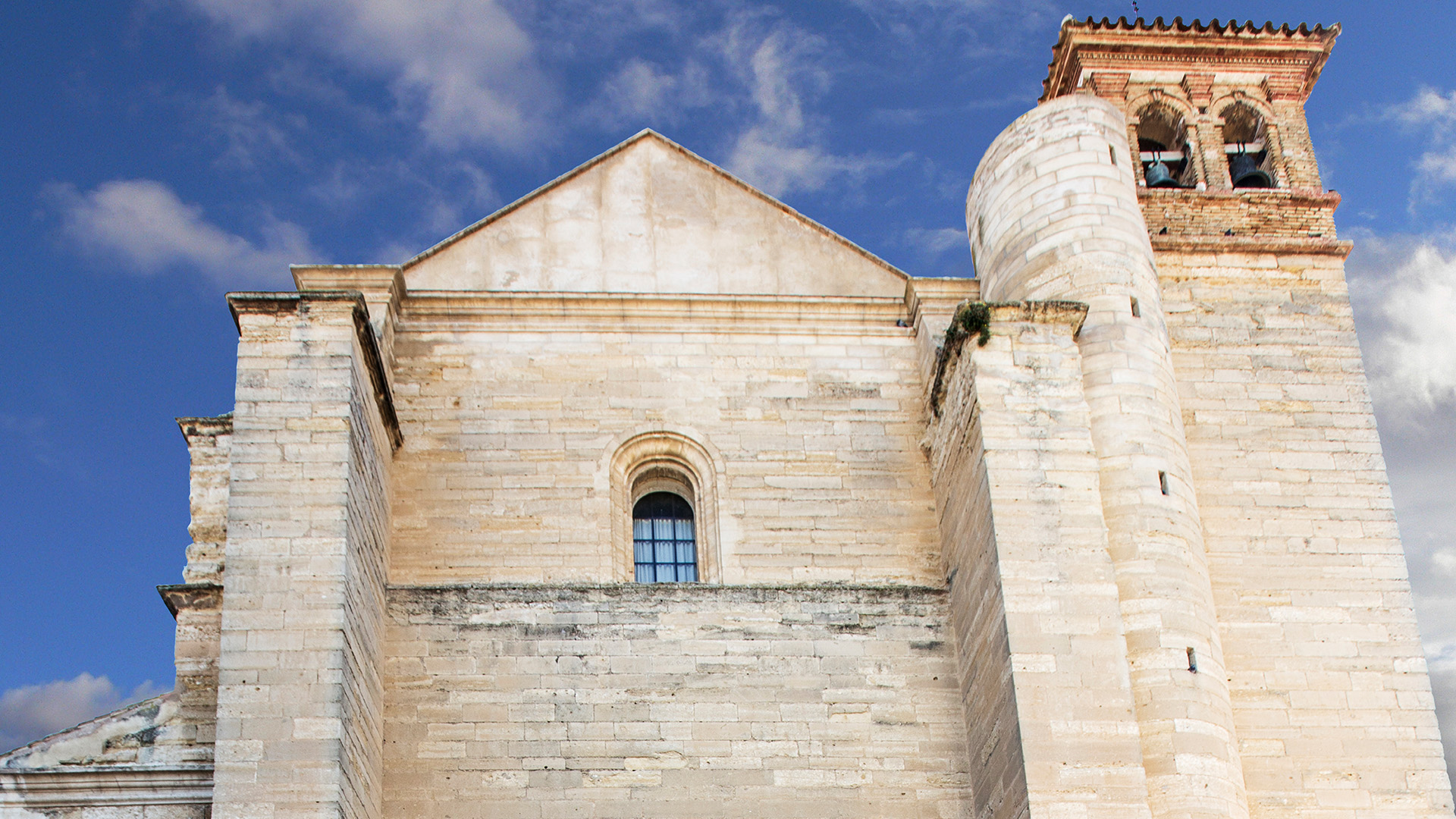This great temple must be inserted in the group of churches that in Antequera have been qualified, as Renaissance columnary churches. However, this one in relation to the other two, Santa María and San Juan, is covered with a Gothic ribbed vault and not with Mudejar armor like the previous ones. The San Pedro columns hall is great magnitude, but poor in decoration.
The naves have six sections, with considerably lower height in the first two sections the lateral ones. The internal supports are broken pillars and very high smooth shaft columns, responding to a model more Gothic than Renaissance. The ribbed vaults are decorated with baroque style plasterwork at the head of the nave of the Gospel. The front of the Main Chapel is occupied by an altarpiece polychrome plasterwork that must have been made in the first third of the eighteenth century. It has two bodies and attic, in which are distributed, embedded in plaster frames, thirteen canvases. The dome or baldachin that appears superimposed somewhat arbitrarily on this altarpiece, came from the main chapel Santa María and had to be moved around the end of the eighteenth century.

Under it, a small altarpiece was made with Corinthian columns on which a denticulated entablature turns in a half-point shape. Among the works of art that we find scattered around the church we will highlight several almost all corresponding to the eighteenth century. In the nave of the Gospel, at its feet, we find an interesting canvas the Virgin of Silence. Also in this nave we find the chapel Nuestra Señora del Consuelo, whose arch is decorated with an architectural framing polychrome plasterwork. The image of the Virgen del Consuelo is a painful dress of the eighteenth century.
The head of the nave is occupied by a spectacular altarpiece the first half of the eighteenth century; in it we find several interesting sculptures, such as a San Antonio and a San Francisco Javier of the seventeenth century. The central niche is occupied by an immaculate smaller size of the natural rococo style. Next to the door the sacristy, already in the nave the Epistle, there is an altarpiece at the end of the eighteenth century, with an interesting Child Jesus Pasionario, smaller than life.
In this same front, we find a Sevillian school canvas, which represents the deceased Christ surrounded by young angels. The next altarpiece is the Virgin of the Afflicted, gilded wood altarpiece and very simple composition. From the architectural point of view, the next space stands out, the Animas chapel, which decorates its vault and mouth of the arch with important plasterwork.

The main altarpiece is from the eighteenth century. In the central niche, among the figurines the Animas in the flames, stands the figure of Christ Mercy, crucified some disciple Pedro Mena. The side altarpieces are from the eighteenth century and are occupied by the Virgin of Antigua, image of the sixteenth century and other sculptures of lesser value.
Before reaching the baptismal chapel we find the important sculpture of Christ Sorrows, crucified of the seventeenth century very elaborate anatomy, which presents the particularity of having almost vertical arms, as proposed by the Jansenists. Already in the baptismal chapel there is little to review other than a canvas of Christ Baptism a certain quality and the baptismal font itself, made of red limestone El Torcal and dated in the sixteenth century. The sacristy is rectangular and is covered with a half-barrel vault, divided into three sections by fajones arches. The grisaille paintings that appear on the half-points are interesting. As interesting pieces this space we find the central table and the aguamanil, made of red limestone El Torcal.
Contact:
Address: Calle San Pedro, 6, Antequera, Málaga
Phone: 952 84 18 66
